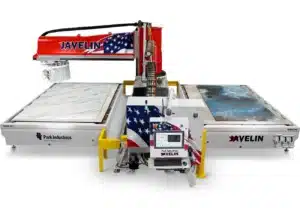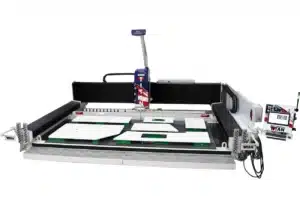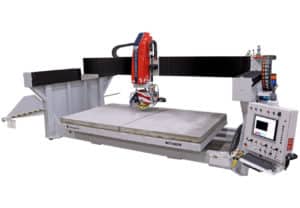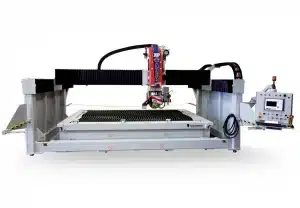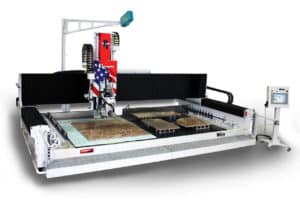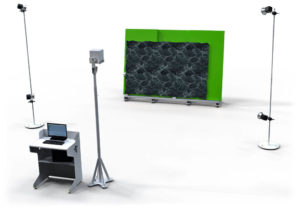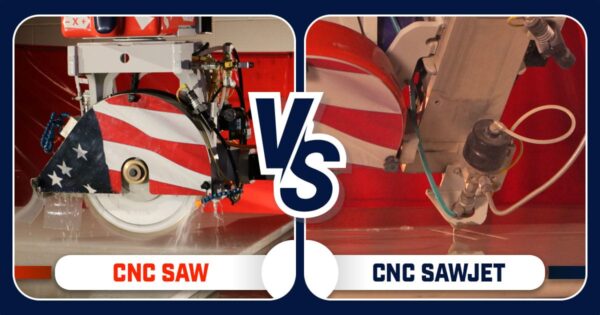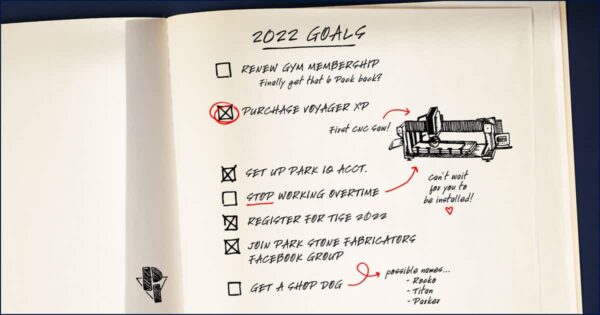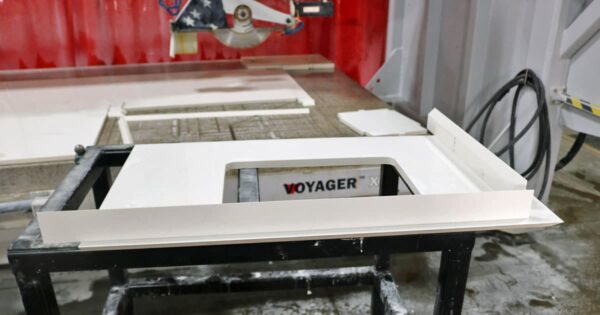The Path to Digital Transformation
Everyone starts somewhere. Some stone fabricators began their fabrication business out of their garage or their truck. Others may have started their business with a manual bridge saw. Over the years, there has been a great transformation in stone fabrication and many shops have evolved into a fully digital fabrication shop. There are steps that need to happen along the path to digital fabrication, and these steps are less daunting than one may think. It is a journey that leads a fabricator from completing every project by hand to operating a high production shop with more automation and with less employees than seemingly possible.
What does “going digital” mean? It is alleviating labor shortage pains, increasing efficiency, and embracing technology. Fabricators that change their fabrication process from manual to digital will work smarter, not harder.
Why go digital?
Change is inevitable. The labor shortages in stone fabrication are forecasted to be a challenge for years to come. If your fabrication process is labor constrained, and you can’t change the labor, change the process. Stepping out of the comfort zone and relinquishing some control to digital fabrication is the key to the future of your business.
“If your fabrication process is labor constrained, and you can’t change the labor, change the process.”
Step 1: The first step in the digital fabrication process is digital templating. Digital templating saves time on each project and is a more accurate, smooth and clean process. The human-error potential is significantly reduced with digital templating. The more time shop employees spend templating, the less time is spent actually fabricating countertops because everything is outlined within the template. Just imagine the templator sending the digital file back to your office immediately after the template is complete. Just think about the power of this technology and how it can increase efficiency, reduce costs, and transform your business.
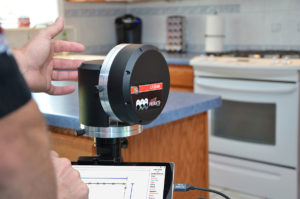
Step 2: The next step is to digitally photograph your jobs or your entire slab inventory. The advantages go beyond the daily projects, and it keeps inventory of every slab in your shop. The organization makes finding available slabs simple. It also allows for customizing layouts to suit your customer’s needs, giving them more trust in your business and its accuracy. After experiencing the impact digital templating has on your shop, the next step will only free up more time for employees to work on other projects.
Step 3: The next step in the digital process is to combine the digital templating with the addition of a CNC sawing solution. The sawing capacity is the backbone of the fabrication process. Transitioning from manual to a CNC operated process will allow for full slabs to be cut with greater accuracy than could ever be completed by hand. It is critical to have precise cuts and straight edges on the final product that your customers will receive.
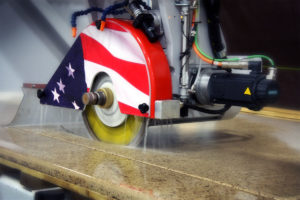
Step 4: The step following a CNC sawing solution would be to add a CNC router to your shop. A CNC router will streamline the process of shaping and polishing edges of freshly cut slabs. The ease of operation, and fast machine movements will help boost your production. The CNC router will efficiently add the finishing touches to the edges of the projects coming off of your CNC saw.
Where to Begin
The key to staying ahead of the game is to pay close attention to the bottleneck of your shop. Analyze the systems and work practices to find ways to increase output with the same size workforce, which is your largest expense. Evaluate your shop’s efficiency with a flow chart diagram. The weakest link may be your equipment, or it could be other areas of your business such as order entry or templating. By conducting a time study on each area of production, you will be able to determine which areas are limiting your operation fabricating capacity.
If you are aware of the factors that are slowing the shop down, then it is possible to properly prepare for the future. Think ahead and position the shop equipment appropriately to avoid work flow problems in the future. The efficiency and ease of relying on digital technology creates a stronger workplace and produces high-quality projects. Although fabrication equipment is a sizable investment, the dollars you are currently spending on labor far exceeds the cost of adding a new machine to your shop. Digital technology has revolutionized the way stone is fabricated.
The Value
Leaving the long, grueling process of hand fabrication behind will have a positive effect on your work environment. Digital technology requires training, yes. The impact this technology has on your production and facility are worth it. Digital equipment will take on projects at a steady pace, as employees work hard to keep up with it.
Digital technology allows labor efficiency to increase by having operators perform other duties simultaneous to the machine performing various operations. Fabrication shops will see more output from current or decreased personnel, while significantly reducing costs on jobs. Fabrication time and cost will be reduced with efficient machine cycles. The initial cost of adding equipment to your shop may seem like a large investment, but the output from the machinery combined with a reduced number of necessary employees will pay for itself.
When deciding on which digital solution to add to your shop, there are a few steps you should go through. It is crucial to consider the future needs of your company, and to make sure not to focus solely on the present situation. When analyzing machines, request time studies and ask the manufacturer for a payback analysis as part of your evaluation. The first digital solution in your shop is just that, the first. After experiencing the benefits of owning digital technology, many fabricators find themselves discussing the next phase of automation to be implemented in their shop.
Digital Technology Tips
- Understanding your comfort level with change.
- Partner with industry leaders who will guide you.
- Define your implementation plan.
Prepared for Production
It is recommended that fabricators take training to have full confidence in operating a new machine. Training and the success of your business work hand in hand. Make sure that you have lifetime training available, as well as 24/7 technical support should you need it in the future. Quality training ensures accurate and uniform processes. By attending training, your employees are able to shorten their learning curve for operation and quickly become profitable.
Training should include instructions on how to maximize equipment efficiency and how to operate the machine in a safe manner. It is crucial that every necessary step is taken to ensure that you receive the most value from your investment, and feel comfortable to operate your machinery all on your own.
There are many facets to the digital fabrication process, but this would be a simple beginning. A fabricator with a digital templating system and CNC machine has “gone digital” in terms of transforming their shop into a digitally-run operation.
Check out the article featured in Stone World: The Evolution of a Start-Up Stone Fabrication Shop.

The Author
Brian Mehr
Park Industries® Sales Consultant for 16+ years.
 Adding the right machinery provides real results. Understand the impact at these shops.
Adding the right machinery provides real results. Understand the impact at these shops.

